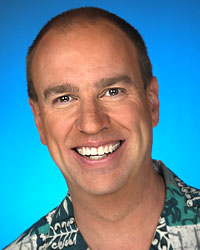 The perennial bed is going full force, and leading the charge is the Gaillardia (Gaillardia grandiflora.)
The perennial bed is going full force, and leading the charge is the Gaillardia (Gaillardia grandiflora.) Gaillardias, or blanket flowers, are daisies with serrated tips on the ray petals. These plants are very tough and cheerful. Downy green leaves grow in low rosettes and have a hairy texture. The plants thrive in sunny gardens and even on sand dunes. Most types grow two feet tall with daisies about three inches wide. It's a no brainer for the LipsYard because it blooms continuously throughout summer and fall without deadheading.
Gaillardias, or blanket flowers, are daisies with serrated tips on the ray petals. These plants are very tough and cheerful. Downy green leaves grow in low rosettes and have a hairy texture. The plants thrive in sunny gardens and even on sand dunes. Most types grow two feet tall with daisies about three inches wide. It's a no brainer for the LipsYard because it blooms continuously throughout summer and fall without deadheading.
Is this the dawning of another incursion into the Middle East?
The New Yorker's Seymour Hersh thinks the United States is conducting clandestine operations within Iran, and reports in this week's issue that Congress agreed to a request from President Bush last year to fund a major escalation of covert activity against Iran -- aimed at destabilizing the country's regime by backing minority groups like the Ahwazi Arab and Baluchi.
The story was knocked down quickly by the administration and U.S. Ambassador to Iraq Ryan Crocker. Hersh dismissed the denial, arguing that "when you run secret operations ... sometimes it's better not to have the ambassador know."
Hersh believes that President Bush and Vice President Cheney "do not want to leave Iran in place with a nuclear program.... They believe that their mission is to make sure that before they get out of offices next year, either Iran is attacked or it stops its weapons program."
If this story is indeed true, then we are clearly encroaching on the sovereignty of a nation. Moreover, what if US soldiers are captured by the Iranians? Then either we will get embarrassed by the Iranians or worse, things will escalate to an all out war involving Iran, Syria, Hizbuallah, Hamas, and Israel.
Not to mention that this kind of information drives the commodities market speculators crazy, driving up the price of oil even further.


































 The dam became obstructed Tuesday morning when bog vegetation blocked it, causing water to pour around until it finally cleared. That created concern about whether the dam was structurally sound.
The dam became obstructed Tuesday morning when bog vegetation blocked it, causing water to pour around until it finally cleared. That created concern about whether the dam was structurally sound. David Allen videotaped the bog getting lodged under the bridge. “The water was going around the dam because the bog was plugging up the top of it," he told TODAYS TMJ4 reporter Lauren Leamanczyk.
David Allen videotaped the bog getting lodged under the bridge. “The water was going around the dam because the bog was plugging up the top of it," he told TODAYS TMJ4 reporter Lauren Leamanczyk. Allen lives on Lower Phantom Lake. If the dam were to break, it's likely that lake would be emptied. “It’s a concern. That’s a lot of water to come out of this dam," he said.
Allen lives on Lower Phantom Lake. If the dam were to break, it's likely that lake would be emptied. “It’s a concern. That’s a lot of water to come out of this dam," he said. Upper Phantom Lake feeds into Lower, so there is concern that both could drain. Within 100 feet of the dam is the power substation that feeds the Village of Mukwonago. As I understand it, if the the dam goes, so does our power. That's handy, sort of a disaster alarm clock, because we won't be able to stay and watch it like the TV crews. My guess is they're hoping for some incredible shot like the houses going into Lake Delton (which has aired a bazillion times so far, reminiscent of the 'Big Blue' crane disaster footage overload.)
Upper Phantom Lake feeds into Lower, so there is concern that both could drain. Within 100 feet of the dam is the power substation that feeds the Village of Mukwonago. As I understand it, if the the dam goes, so does our power. That's handy, sort of a disaster alarm clock, because we won't be able to stay and watch it like the TV crews. My guess is they're hoping for some incredible shot like the houses going into Lake Delton (which has aired a bazillion times so far, reminiscent of the 'Big Blue' crane disaster footage overload.)

 Our clump of Irises reminds me of the clump of faux pas springing from John McCain, the presumptive Republican Presidential candidate. Here's the latest:
Our clump of Irises reminds me of the clump of faux pas springing from John McCain, the presumptive Republican Presidential candidate. Here's the latest:

 The jury is still out at our house, but we're keeping a watchful eye on the birdbath.
The jury is still out at our house, but we're keeping a watchful eye on the birdbath.


